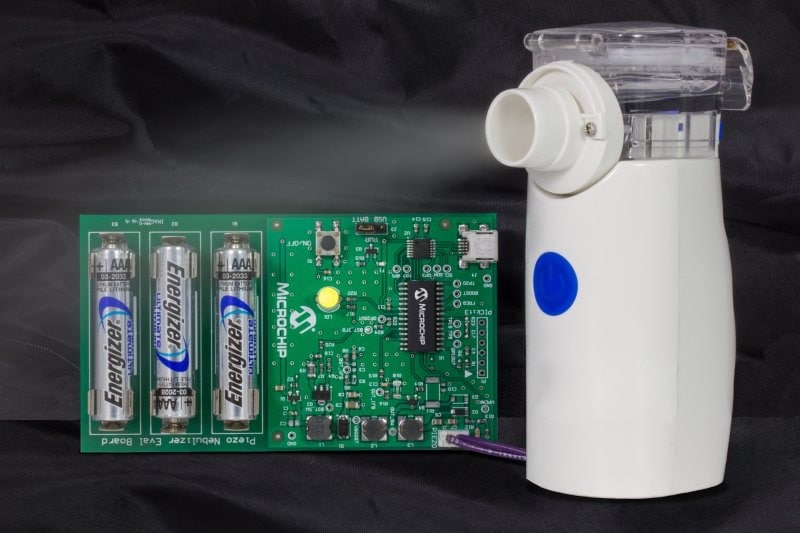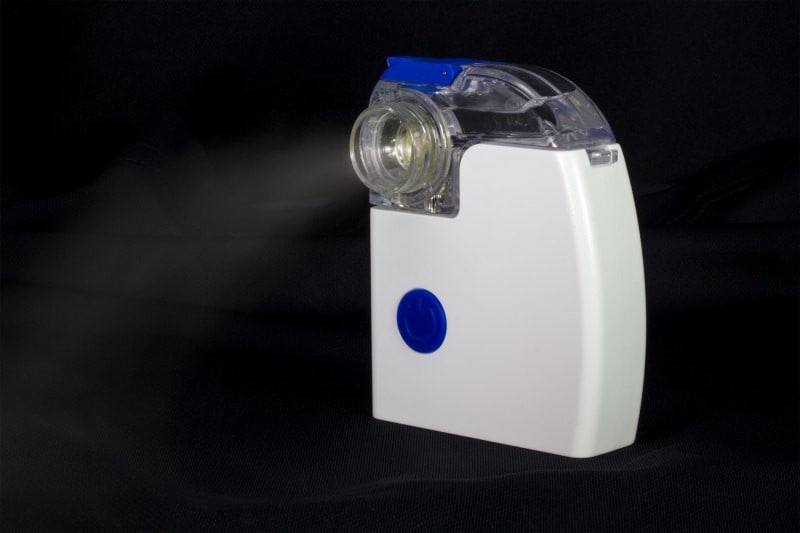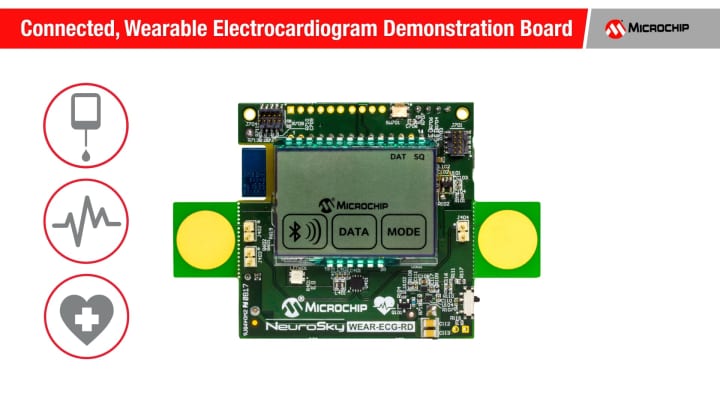Medical nebulizers are drug delivery devices that reduce a liquid medication to extremely fine cloud-like particles and deliver them directly to the airways for respiratory therapy. Medical nebulizers are commonly used for the treatment of COPD, asthma, cystic fibrosis and other respiratory diseases.
Nebulizers tend to be divided into three categories: jet nebulizers, ultrasonic nebulizers and mesh nebulizers. Each type of nebulizer has its own relative strengths. Recently there have been many improvements in mesh nebulizers.
Mesh nebulizers force liquid medications through multiple apertures in a mesh or aperture plate in order to generate aerosol droplets. This type of nebulizer has the advantages of being small and portable, powered by batteries, silent in operation, yield shorter treatment times, give increased output efficiency, and have minimal residual volume. Other advantages include a predominantly fine-particle fraction that reaches into the peripheral lung and the ability to nebulize in low drug volumes.
Nebulizer Demo Design Files

Vibrating Piezoelectric Mesh Nebulizer Demo Design Files
Check out the design files for a Vibrating Piezoelectric Mesh Nebulizer.

Secure Nebulizer Demo Design Files
Check out the design files for a Secure Nebulizer.
Pneumatic Nebulizer System Diagram
Mesh Nebulizer System Diagram
We Have What Nebulizer Designers Need
Products
Microcontrollers
Signal Conditioning and Power Management
Wireless
Other Products
Application Notes
|
Title
|
|
|---|---|
| AN4206 - Authenticating Consumables with the ATSHA204A and PIC16 Microcontroller | Download |
| AN2265 - Vibrating Mesh Nebulizer Reference Design | Download |
| AN2133 - Extending PIC MCU Capabilities Using CLC | Download |
| AN1149 - Design A Load Sharing System Power Path Management with Microchip's Stand-Alone Li-Ion Battery Charger | Download |
| AN1523 - Sine Wave Generator Using Numerically Controlled Oscillator Module | Download |
| AN1416 - Low-Power Design Guide | Download |
| AN1207 - Switch Mode Power Supply (SMPS) Topologies (Part II) | Download |
| AN1468 - Peripheral Brief: Programmable Switch Mode Controller (PSMC) | Download |
| AN1451 - Glitch-Free Design Using the Configurable Logic Cell(CLC) | Download |
| AN980 - Designing a Boost-Switching Regulator with the MCP1650 | Download |
| AN990 - Analog Sensor Conditioning Circuits - An Overview | Download |
Technical Brief
|
Title
|
|
|---|---|
| TB3104 - Boost Converter Using the PIC16F753 Analog Features | Download |
Medical Video Channel
Nebulizer Design Solutions

Connected, Secure, and Wearable Electrocardiogram (ECG) Demonstration Video
Connected, Secure, and Wearable Electrocardiogram (ECG) Demonstration Video
As medical remote patient monitoring becomes more important, the need for wearable ECG capability has become critical. Microchip’s Connected, Wearable ECG Demonstration Board can be used in the design of advanced fitness tracking devices and can also be designed into medical wearable remote patient monitoring and diagnostic systems.

Wearable Heart Rate Monitor Demo
Wearable Heart Rate Monitor Demo

Ultra Low-Power (ULP) Connected, Wearable Activity Monitor Demo
Ultra Low-Power (ULP) Connected, Wearable Activity Monitor Demo
High-end wearable activity trackers can take step count, temperature, light and other movement and environment measurements. They are not only being used for fitness applications but are becoming an essential part of medical device design. Microchip’s Ultra Low-Power or ULP Connected, Wearable Activity Monitor Demonstration Board can be used as the starting point for the design of medical home monitoring, patient tracking and drug delivery compliance devices.
For more information, please visit:
https://www.microchip.com/en-us/solutions/medical

Microchip's Wearable Bluetooth® Low Energy Pedometer Demonstration Board
Microchip’s wearable Bluetooth Low Energy pedometer reference design demo helps designers develop a low-cost, low-power, wearable pedometer with both an on-board LED display as well as Bluetooth Low Energy capability to connect to smartphones and tablets. This demo board can be used as a basic wearable step count activity tracker design, but it can also be used as a development platform for the design of more advanced activity tracker functions such as distance traveled or calories burned. Also, additional biometric measurement capability can be added using other Microchip medical reference demo designs.

Microchip’s Connected Thermometer Demonstration
Microchip’s Connected Thermometer Demonstration
Microchip's Connected Thermometer Board demonstrates the implementation of a Bluetooth®-connected digital thermometer using Microchip's PIC16F1519 MCU and RN42 Bluetooth Module. The PIC16F1519 MCU is an eXtreme Low Power (XLP), cost-effective 8-bit microcontroller with an integrated capacitive touch sensing module. Connectivity is demonstrated on this board by the use of Microchip's fully qualified RN42 Bluetooth2.1 + EDR Module. This demo design can also be easily implemented using any of Microchip's Bluetooth Low Energy or Wi-Fi® connectivity modules.

Microchip’s Connected Weight Scale Demonstration
Microchip’s Connected Weight Scale Demonstration
Microchip’s Connected Weight Scale Demonstration Board shows the implementation of a Bluetooth®-connected weight scale using Microchip’s PIC16F1783 MCU and the RN42 Bluetooth module. The PIC16F1783 MCU is an eXtreme Low Power (XLP), cost-effective 8-bit microcontroller with an integrated capacitive touch sensing module, 12-bit ADC and operational amplifiers. Connectivity is demonstrated on this board by the use of Microchip’s fully qualified RN42 Bluetooth 2.1 + EDR module. This demo design can also be easily implemented using any of Microchip’s Bluetooth Low Energy or Wi-Fi® connectivity modules.

Microchip's Pulse Oximeter Demonstration Board
Microchip's Pulse Oximeter Demonstration Board
Microchip’s pulse oximeter reference design demo board helps designers develop a low-cost, low power handheld or wearable pulse oximeter with user interface which is capable of measuring both heart rate and blood oxygen level. It can be used to start development of a hospital or clinical pulse oximeter design, but it can also be used as a starting point for the development of a wearable activity tracker design that can measure heart rate and blood oxygen level.

Health & Fitness Solutions
Health & Fitness Solutions
See how Microchip's products can enable the development of innovative medical and fitness solutions.
More information: https://www.microchip.com/en-us/solutions/medical

Medical Product Solutions from MASTERs 2016
Medical Product Solutions from MASTERs 2016
Get an overview of some of Microchip's solutions for designing the latest medical devices.
More information: http://www.microchip.com/medical

Intelligent Analog
Intelligent Analog
Microchip Intelligent Analog PIC MCUs offer on chip analog building blocks with flexible connections to optimize integration, simplify design, and minimize cost.

PIC24F "GC" Intelligent Analog Integration
PIC24F "GC" Intelligent Analog Integration
The PIC24F “GC” family integrates advanced analog features like 16-bit ADC, 12-bit 10 Msps ADC, Dual DAC, Dual OpAmps along with Low Power, USB and LCD. This integration creates and MCU perfect for portable medical and industrial applications.

PIC24F “GC” Based Blood Pressure Meter Demonstration
PIC24F “GC” Based Blood Pressure Meter Demonstration
The PIC24FJ128GC010 powers a blood pressure meter demonstration that utilizes the integrated Intelligent Analog.

Microchip Medical Solutions Demo
Microchip Medical Solutions Demo
This video features a number of medical demos, as well as some innovative new products from Microchip customers.

Connected Functional Safety Syringe Pump/Auto Injector
Connected Functional Safety Syringe Pump/Auto Injector
Whether healthcare is administered in the hospital, clinic or in the home; safe automated syringe pumps and auto injectors have become a critical part of drug delivery. Microchip's Functional Safety Syringe Pump/Auto Injector demo is a great example of the implementation of a medical, safety-critical application. This demonstration highlights the use of Microchip's Class B Functional Safety Software Libraries and our IEC-62304 compliant Functional Safety Compilers. The demo itself not only shows how to design the motor control and sensor interface for an automatic syringe pump or auto injector device, it also demonstrates how to implement connected, patient compliance functions in a drug delivery system.